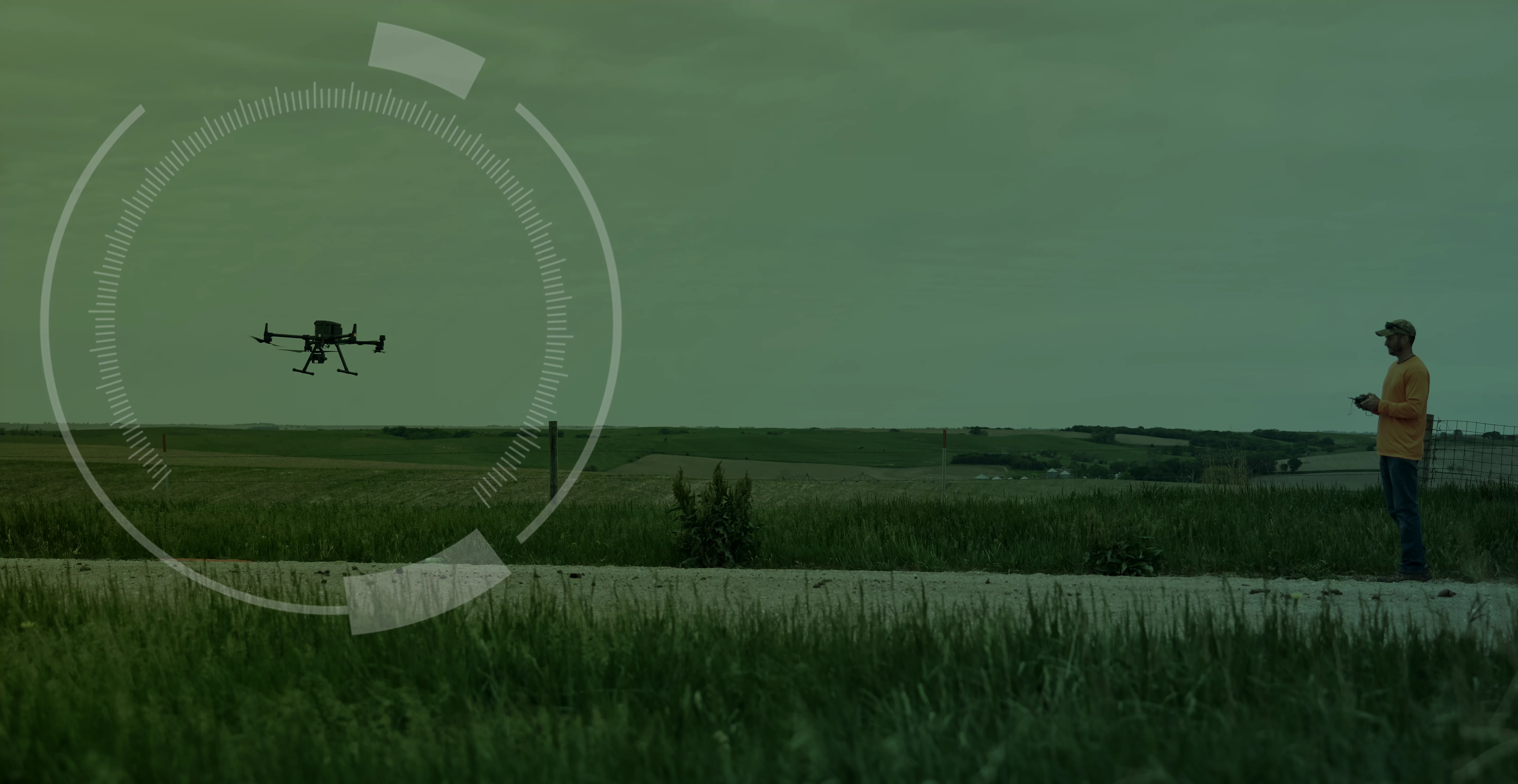

Welcome to the third and final blog in the series about AI in Agriculture, inspired by the white paper Agriculture and Artificial Intelligence: How to Effectively Implement AI in Precision Agriculture.
In the previous blog, we described two complications to applying AI in agriculture caused by the dynamic nature of biological systems. In this blog, we will discuss methods Taranis is using to overcome the challenges.
Taranis empowers growers with a detailed understanding of what is happening in their fields to make decisions based on accurate and timely data. Scouting growers’ fields with drones and small planes, Taranis gathers high-resolution imagery of every acre. AI models then analyze the imagery to determine the plant population, and detect weed pressure, diseases, nutrient deficiencies, and other threats. Over the years, Taranis has captured more than 200 million data points (and growing) and uses this dataset to train its AI models.
As the company has encountered the challenges described in the previous blog, namely, time restraints for data collection and the AI-specific problem of data drift, it has adapted both its business model and its AI solutions accordingly.
Taranis’ solutions have enabled the company to provide customers with meaningful and actionable insights across millions of acres.
Taranis partners with a large network of drone service providers (DSPs) who capture imagery of customers’ fields. Ideal time windows to arrive at growers’ fields are determined by analyzing crop growth models based on individual planting dates and regional weather patterns. Pilots are directed to capture the leaf-level imagery, and then they promptly upload the images to the company’s servers for processing. Direct management of pilots’ schedules and their arrival at growers’ fields during the relevant crop growth stages allows for the collection of the rich, large, and diverse datasets necessary to train the AI models.
The images for production are captured in the same way as those used in the training datasets; therefore, the data distributions are highly correlated. This leads to the high performance of the AI models in production.
Managing a logistical operation of this scale is an essential element in the company’s ability to scout customers’ fields and generate insights in a timely and reliable manner.

The second issue affecting AI applications in agriculture, which we discussed in the previous blog, is called data drift. Data drift occurs if the AI model experiences a significant change in the input data, causing a shift in data distributions. If the data collected varies from the training data, the models might not function optimally. Data drift is a major issue in agriculture because biological systems are dynamic and constantly in flux.
To address the problem of data drift, Taranis employs an approach known as continuous learning. Instead of training an AI model once, deploying it, and “forgetting about it,” data from production is saved and used for refining the model parameters continuously. This maintains a high correlation between the distribution of the data used to train the model and that captured during production.
The first challenge is the ability to automatically recognize the data coming from production that is not correlated with the training dataset. This is a non-trivial task when considering that in a single day, hundreds of thousands of images may be captured, and only a small percentage of them should be used to refine the AI model. Taranis uses a combination of several techniques to identify the images that should be used for re-training, which are referred to as the “AI Confidence” component.
The second challenge Taranis encountered when designing a continuous learning flow involves the automatic re-training and deployment of the refined AI models, once the new data has been added to the training datasets. The dynamic nature of agriculture, combined with the seasonal character of the business, dictates re-training and deploying the refined AI models to production as quickly as possible. Therefore, it is crucial to support a fully automated process to re-train the models and then validate the model predictions across a broad range of test data to ensure there is no degradation in performance.
Taranis has been developing and perfecting its AI models and algorithms over several years, with a complete understanding of the complexities of agriculture. Their effective methods for data collection and rich data sets provide customers access to critical information with ease and confidence. This effort is to achieve their ultimate goal; helping advisors and growers enhance productivity and maximize yield.
To learn more, contact the Taranis team.

In this blog, we will focus on the singular aspects of the agriculture industry that make the application of AI methodologies more complex than in other industries.

This is the first blog in a series where we will discuss AI technology and how to apply it to Precision Agriculture methodologies and how, ultimately, AI can take your farm to a new level of efficiency and prosperity.

Because we are one of the nation's largest drone operators in agriculture, we often are asked, "Is it legal for drones to fly over my farm?"